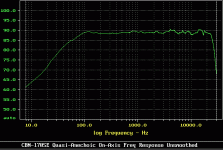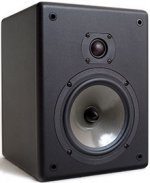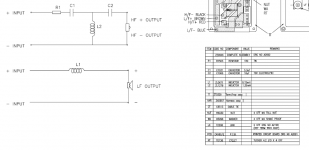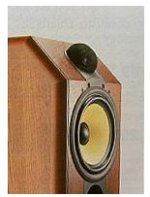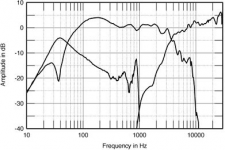Back when I first started getting into high end audio (around 2003-2004) there was tremendous hype around this speaker. I swear from what people were saying, Jesus himself could've designed this speaker. Some were comparing it to speakers in ANY price range. Supposedly they measured flatter than most anything. Fast forward to 2016 there is an updated version and it's allegedly better than ever- the 170se. I'm just curious on what the diy community thinks of this speaker, whether heard or unheard, and if you guys think it's the real deal or another mediocre $300~ speaker.
This is just the kind of a product that has the potential of being
a bestseller with the right advertising. I don't doubt that it can/does
sound very well having in mind the driver properties. Any manufacturer
can produce a good sounding speaker for the money, question is will they.
Some of the specifications are traditionally very optimistic like Impedance
of 8 ohm, when it's already clear that the dcr of the woofer is below 4 ohms,
the air core inductor typically 0,5 ohms or so. Anechoic sensitivity is hardly
89 dB, more like 85-86dB.
The manufacturer has done all in its power to cut the costs down.
Their quote:" We were unable to find a woofer that met our demands so we designed our own"
a bestseller with the right advertising. I don't doubt that it can/does
sound very well having in mind the driver properties. Any manufacturer
can produce a good sounding speaker for the money, question is will they.
Some of the specifications are traditionally very optimistic like Impedance
of 8 ohm, when it's already clear that the dcr of the woofer is below 4 ohms,
the air core inductor typically 0,5 ohms or so. Anechoic sensitivity is hardly
89 dB, more like 85-86dB.
The manufacturer has done all in its power to cut the costs down.
Their quote:" We were unable to find a woofer that met our demands so we designed our own"
I think it looks rather good at the price. Hardly diy, but not everyone wants to build their own.
A well-behaved 7" aerogel woofer might be rather good on a wide baffle.
The on-axis frequency response actually tells you zip about the sound beyond it being inoffensive and tonally accurate at the sweet spot.
There are many theories about what makes a good speaker, and your ears always decide in end. The classic two way is where most people start, but TBH, three ways work much better.
SEAS-3-Way-Classic
Here's the B&W CDM1 which uses a biggish kevlar driver. Quite competent. Though I could do better with a bit extra cash. Well, IMO. It's why I diy. 😱
So if you have an old pair of speakers, you should really consider upgrading the box, rather than buy new.
DIY-Loudspeakers
A well-behaved 7" aerogel woofer might be rather good on a wide baffle.
The on-axis frequency response actually tells you zip about the sound beyond it being inoffensive and tonally accurate at the sweet spot.
There are many theories about what makes a good speaker, and your ears always decide in end. The classic two way is where most people start, but TBH, three ways work much better.
SEAS-3-Way-Classic
Here's the B&W CDM1 which uses a biggish kevlar driver. Quite competent. Though I could do better with a bit extra cash. Well, IMO. It's why I diy. 😱
So if you have an old pair of speakers, you should really consider upgrading the box, rather than buy new.
DIY-Loudspeakers
Attachments
The measurements are misleading. It's only flat on axis. Off axis it measures miserably, because there's no directivity control for the tweeter.
And it sounds like it measures: Thin but OK outdoors on-axis, obvious upper midrange colorations in a typical room.
And it sounds like it measures: Thin but OK outdoors on-axis, obvious upper midrange colorations in a typical room.
The measurements are misleading. It's only flat on axis. Off axis it measures miserably, because there's no directivity control for the tweeter.
And it sounds like it measures: Thin but OK outdoors on-axis, obvious upper midrange colorations in a typical room.
Have you heard the Cbm-170? It's funny you mention harsh upper mids because to me it seems like a lot of speakers fail in the upper mids/lower treble- I'm assuming this is because of the x over?
Last edited:
Have you heard the Cm-170?
If I have, it wasn't memorable to me. I've heard enough speakers with the same drive-unit configuration and measured trends - great performance on axis, risible performance off axis - to know what they sound like. It's hard to remember one speaker that's crappy in the same way as 500 others on the market...
It's funny you mention harsh upper mids because to me it seems like a lot of speakers fail in the upper mids/lower treble- I'm assuming this is because of the x over?
It could be, but here the xover is as good as can be pretty much. The problem is, the design was simply incomplete before the xover entered the picture: no care was taken to match the directivity of the tweeter at the bottom of its passband to the woofer at the top of it's passband. The result is too much upper-midrange energy spewed into the room. The polars of the Ascend speaker at 3D3A show this flaw clearly.
Thank you for the response. I wasn't even aware of the problems you mentioned with this particular speaker. Since a good majority of my listening is done off axis, maybe there are other designs you could recommend. My current speakers are Psb Stratus Minis and have no clue how they measure off axis.
I don't see anything wrong with this speakers plots, on or off-axis.
Of course, those that find waveguided speakers to be a better way
of listening would disagree, which is fine with me. I haven't advanced
that much yet to try it out.
Of course, those that find waveguided speakers to be a better way
of listening would disagree, which is fine with me. I haven't advanced
that much yet to try it out.
The original 170 was my first foray into hi-fi. I'd gladly stand behind their products for the price. I remember pianos sounding very good on that speaker. I was in school for EE when I purchased them and started down the DIY road around the same time. They aren't the worlds best speaker, but they sounded much better to me than anything at the same price point and definitely function as advertised.... I sold them to a cousin who really enjoys them still.
Sent from my iPhone using Tapatalk
Sent from my iPhone using Tapatalk
I don't see anything wrong with this speakers plots, on or off-axis.
Are you looking at manufacturer data or the polar plots at 3D3A. Even the mfg plots show the explosion of upper midrange energy off axis, but the polars at 3D3A really expose the performance flaws of this speaker, as well as all other 7" 2-ways with 180deg tweeter waveguides.
FWIW, I'm not a narrow waveguide absolutist. (All baffles are waveguides, just bad ones.) I A 3-way with a small midrange that maintains even response off axis (such as the NHT Classic 3/4, NaO Note, Linkwitz dipole, etc.) is an excellent solution as well.
Last edited:
Are you looking at manufacturer data or ...
I was looking at manufacturer's data. I have a 3 way speaker which has always
made me feel very happy about music. A 9,5" woofer, 2" dome mid and a 1,1"
dome tw. Anyone who has listened to it said that it played so smoothly and
without making one tired of it. I guess I must have done something right with
its off-axis response.
- Status
- Not open for further replies.
- Home
- Loudspeakers
- Multi-Way
- Ascend Acoustics cbm-170 opinions?
